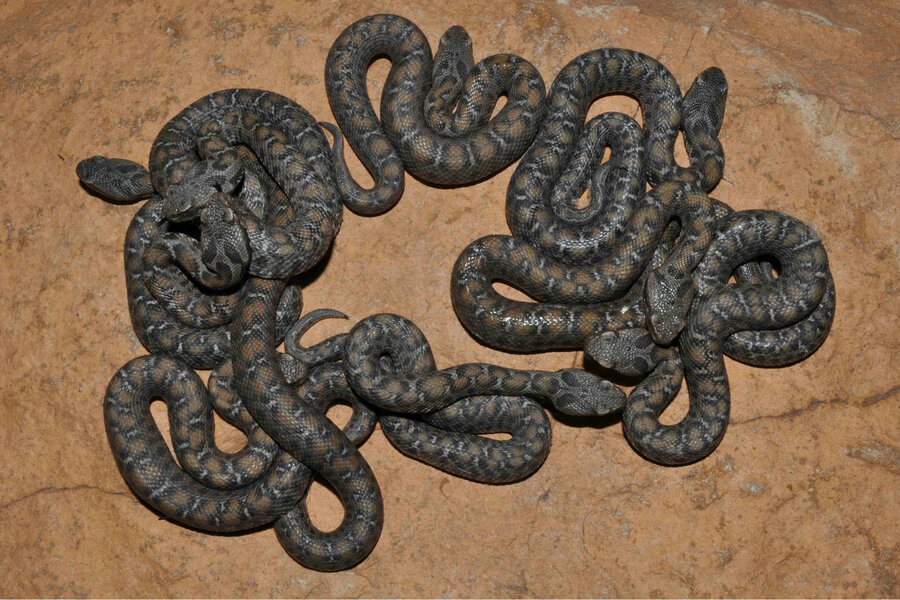Nine adorable venomous vipers born at St. Louis Zoo
Loading...
Nine endangered vipers were born at the St. Louis Zoo in August, an event that the zoo has called a significant moment in its efforts to rescue the venomous species from the brink of extinction.
Born on August 16 as part of a breeding program, the nine babies are ocellate mountain vipers, or Montivipera wagneri, a species native to eastern Turkey and northwestern Iran. Believed extinct for some 140 years, the snake was "rediscovered" in the Turkish mountains in 1983. The find was ambiguously happy for conservationists: the snake was alive, but collectors soon besieged the area, putting the already rare snake back into the red zone.
Over the past 15 to 20 years, the ocellate mountain viper population has dropped an estimated 80 percent, though exact population demographics are not known, says Jeff Ettling, Curator of Herpetology & Aquatics at the St. Louis Zoo.
"Vipers are considered by many experts to be one of the most endangered groups of snakes in the world," writes Dr. Ettling, in an email. "Many viper species, such as the Ocellate Mountain Viper have small, fragmented distributions which make them particularly vulnerable to extinction due to habitat alteration/degradation, human persecution and over-collection for the exotic pet trade."
Ocellate mountain vipers belong to the viper family, a group of snakes known for their long fangs primed to inject the venom stored in glands at the back of their upper jaws, as well as a long list of romantic cameos in literature: Shakespeare had his version of Cleopatra administer an asp viper (a snake not native to Egypt) to her arm, ensuring that a viper’s primal poison would for the next few hundred years be associated with having undone one of the allegedly most beautiful women ever to have lived.
"Snakes are a very maligned group of animals, but whether people love them or hate them I believe they are fascinated by them nonetheless," says Ettling.
The ocellate mountain viper, colored in a subtle orange-black pattern, like a Turkish tile, is like most vipers but unlike most snakes in that it gives birth to live babies, not to eggs. The new vipers are all from one mother – the species' litters range from two to 12 infants, says Ettling – and are diminutive animals, with tongue-flicking heads smaller than a quarter.
The St. Louis Zoo is a participant in the Association of Zoos and Aquariums' (AZA) Species Survival Plan, which aims to breed and ensure the continuation of threatened species.








